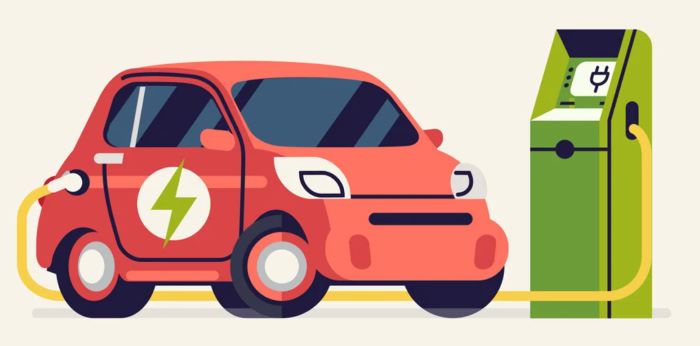Are you interested in learning about the exciting world of electric vehicles (EVs)? With concerns over climate change and the need for sustainable transportation, EVs have become increasingly popular. If you’re considering enrolling in an EV course, understanding the different types of electric vehicles can be a great starting point.
Electric vehicles come in various forms, each designed to cater to specific needs and preferences. From fully electric cars and SUVs that run solely on rechargeable batteries to hybrid vehicles that combine electric motors with traditional gasoline engines, the options are diverse. Additionally, there are electric motorcycles, scooters, and even electric bicycles, providing eco-friendly alternatives for shorter commutes or leisure activities.
By exploring the different types of electric vehicles available, you can make an informed decision about which one best suits your lifestyle and transportation requirements. An Electric Vehicle training can help you navigate this rapidly evolving industry and prepare you for the future of sustainable mobility.
Table of Contents:
- Introduction to Electric Vehicles
- Battery Electric Vehicles (BEVs)
- Plug-in Hybrid Electric Vehicles (PHEVs)
- Hybrid Electric Vehicles (HEVs)
- Fuel Cell Electric Vehicles (FCEVs)
- Neighborhood Electric Vehicles (NEVs)
- Off-Road Electric Vehicles
- Electric Bicycles (E-Bikes)
- Electric Scooters and Motorcycles
- Conclusion: The Future of Electric Vehicles
Introduction to Electric Vehicles
Electric vehicles are vehicles that are powered by electric motors, rather than traditional internal combustion engines. These vehicles are powered by electricity stored in batteries or fuel cells, which are more environmentally friendly and sustainable than gasoline-powered vehicles. Electric vehicles produce zero emissions while driving, making them a cleaner and more sustainable option for transportation.
Battery Electric Vehicles (BEVs)
Battery electric vehicles, or BEVs, are fully electric vehicles that are powered by rechargeable batteries. These vehicles do not have an internal combustion engine and rely solely on electric power for propulsion. BEVs are charged by plugging them into an electric outlet or charging station, and they can travel a certain distance on a single charge. Popular examples of BEVs include the Tesla Model S and the Nissan Leaf.
Plug-in Hybrid Electric Vehicles (PHEVs)
Plug-in hybrid electric vehicles, or PHEVs, combine an internal combustion engine with an electric motor and a battery. These vehicles can be charged by plugging them into an electric outlet, and they can also run on gasoline when the battery is depleted. PHEVs offer the flexibility of running on electric power for short trips and switching to gasoline for longer journeys. Examples of PHEVs include the Chevrolet Volt and the Toyota Prius Plug-in.
Hybrid Electric Vehicles (HEVs)
Hybrid electric vehicles, or HEVs, combine an internal combustion engine with an electric motor and a battery. Unlike PHEVs, HEVs cannot be plugged in to charge the battery – instead, the battery is charged through regenerative braking and the engine’s power. HEVs are more fuel-efficient than traditional gasoline-powered vehicles, as they can switch between the electric motor and the engine to optimize fuel consumption. Popular HEVs include the Toyota Prius and the Honda Insight.
Fuel Cell Electric Vehicles (FCEVs)
Fuel cell electric vehicles, or FCEVs, are powered by hydrogen fuel cells that convert hydrogen gas into electricity to power the vehicle. FCEVs emit only water vapor as a byproduct, making them a clean and environmentally friendly option for transportation. FCEVs have a longer range and faster refueling times compared to battery electric vehicles, but they are currently limited by the availability of hydrogen refueling stations. Popular FCEVs include the Toyota Mirai and the Hyundai Nexo.
Neighborhood Electric Vehicles (NEVs)
Neighborhood electric vehicles, or NEVs, are small electric vehicles designed for short trips in neighborhoods or urban areas. These vehicles are limited to lower speeds and shorter distances, making them ideal for local transportation. NEVs are often used for tasks such as golf cart transportation, campus shuttles, and urban deliveries. Examples of NEVs include the GEM e4 and the Polaris GEM.
Off-Road Electric Vehicles
Off-road electric vehicles are electric vehicles designed for use in rugged terrain and outdoor environments. These vehicles are equipped with features such as all-wheel drive, high ground clearance, and durable tires to navigate off-road trails and rough terrain. Off-road electric vehicles are popular among outdoor enthusiasts and adventurers who enjoy exploring remote areas and challenging landscapes. Examples of off-road electric vehicles include the Rivian R1T and the Bollinger B1.
Electric Bicycles (E-Bikes)
Electric bicycles, or e-bikes, are bicycles equipped with an electric motor to assist with pedaling. E-bikes are a popular alternative to traditional bicycles, as they provide an extra boost of power for uphill climbs and long distances. E-bikes are eco-friendly and energy-efficient, making them a sustainable option for commuting and recreational cycling. E-bikes come in various styles, including city bikes, mountain bikes, and cargo bikes.
Electric Scooters and Motorcycles
Electric scooters and motorcycles are two-wheeled electric vehicles that offer a convenient and efficient mode of transportation. Electric scooters are popular for short trips in urban areas, while electric motorcycles are used for longer commutes and recreational riding. Electric scooters and motorcycles are cost-effective and environmentally friendly alternatives to gasoline-powered vehicles, with zero emissions and lower operating costs. Popular electric scooter brands include Segway and Xiaomi, while electric motorcycle brands include Zero Motorcycles and Harley-Davidson.
Conclusion: The Future of Electric Vehicles
The future of electric vehicles is bright, as advancements in technology and infrastructure continue to drive the growth of the EV market. Governments around the world are implementing policies to promote the adoption of electric vehicles, such as incentives for EV purchases and investments in charging infrastructure. Automakers are also increasing their production of electric vehicles, with a growing number of models and options available to consumers. As the demand for sustainable transportation grows, electric vehicles are poised to become a mainstream option for drivers seeking a cleaner and greener way to travel.
In conclusion, the different types of electric vehicles offer a range of options for consumers looking to make the switch to electric transportation. From battery electric vehicles to electric bicycles, there is a diverse selection of EVs available to suit different needs and preferences. As the world transitions towards a more sustainable future, electric vehicles will play a key role in reducing emissions and combating climate change. The future of electric vehicles is promising, with continued innovation and investment driving the growth of the EV market. By choosing electric vehicles, consumers can contribute to a cleaner and healthier planet for future generations.




